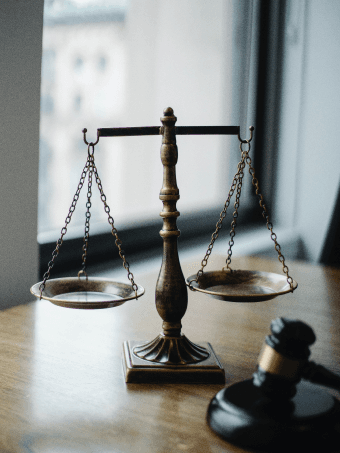Trademark Registration in China: 3 Common Challenges
One of the most significant challenges for international brands in China is trademark squatting. Opportunistic individuals or companies may register trademarks resembling well-known brands preemptively, aiming to profit from selling or licensing the trademarks back to the rightful owners. This practice not only hinders legitimate trademark registration but also poses significant financial and legal challenges for brands seeking to establish their presence in China.
China's diverse linguistic landscape presents additional challenges for trademark registration. Translating brand names and slogans into Chinese characters while maintaining brand identity and significance can be a delicate task. Moreover, linguistic differences across regions within China may require brands to adapt their trademark strategies to resonate with local consumers, further complicating the registration process.
On top of that, the prevalence of counterfeit goods in China poses a constant threat to brand integrity and consumer trust. Despite efforts by authorities to combat counterfeiting, enforcement remains a persistent challenge due to the sheer scale of the market and limited resources. This environment creates vulnerabilities for brands, requiring robust enforcement strategies to protect against infringement and maintain market share.
Trademark Lawsuit Cases in China
Starbucks Corporation vs Xingbake
Starbucks encountered major trademark hurdles in China during its rapid expansion in the country. In 2012, a Chinese company named Xingbake filed a trademark infringement lawsuit against Starbucks, claiming ownership of the Chinese name "Xingbake," which translates to "Starbucks." Despite Starbucks' widespread recognition and substantial investments in the Chinese market, the lawsuit highlighted the challenges posed by trademark disputes in China's complex legal landscape. Starbucks ultimately prevailed in the case, but the incident highlighted the need for robust trademark protection strategies tailored to the nuances of the Chinese market.
Manolo Blahnik vs Fang Yuzhou
Manolo Blahnik also encountered significant challenges in protecting its trademark rights in China. Despite its global renown and established presence in the fashion industry, the brand faced obstacles when a Chinese businessman Fang Yuzhou successfully registered the "Manolo & Blahnik" trademark for footwear in China. The brand's eventual victory in 2022 put an end to a continuous legal dispute that lasted more than 2 decades, returning the British shoe designer the right to use his own name in the Chinese market.
Michael Jordan vs Qiaodan Sports
Basketball legend Michael Jordan found himself embroiled in a lengthy legal dispute with Qiaodan Sports, a Chinese company that had registered numerous trademarks using his name. Jordan first launched a lawsuit against the Chinese company back in 2012. His claim was that Qiaodan Sports has illegally misappropriated the fame behind his name in order to sell their products. Despite securing a favorable ruling from China's highest court in 2020, ordering Qiaodan Sports to compensate him for damages and disassociate from his name, Jordan's victory was tempered by a legal loophole that allowed some "Qiaodan" trademarks to remain in use.
Apple Inc. vs Proview Technology
Apple Inc., the technology giant behind the iPhone and iPad, faced a high-profile trademark dispute with Proview Technology, a Chinese electronics manufacturer, over the "iPad" trademark in China. Despite Apple's acquisition of the global rights to the "iPad" trademark from Proview's Taiwanese affiliate in 2009, Proview Technology claimed ownership of the trademark in mainland China. The legal battle escalated, with Proview seeking hefty compensation from Apple. Eventually, in 2012, Apple settled the dispute with Proview for $60 million, securing the rights to the "iPad" trademark in China.
Tesla vs Zhan Baosheng
Tesla faced challenges in protecting its brand in China due to the preemptive registration of the "Tesla" trademark by Zhan Baosheng, a businessman from Guangzhou, before Tesla's official entry into the Chinese market. This act of trademark squatting posed a significant obstacle for Tesla, limiting its ability to operate under its own brand name in China. Tesla filed a lawsuit against Zhan Baosheng for unauthorized use of their name and logo, alleging trademark infringement and unfair competition. Ultimately, the Chinese court ruled in favor of Tesla in 2014, ordering Zhan Baosheng to cease using the Tesla name and logo and pay damages totaling 1.47 million yuan.
Takeaway
While China offers immense opportunities for global businesses, trademark registration in the country presents formidable challenges. Trademark squatting, linguistic complexities, and the prevalence of counterfeit goods create significant obstacles for brands seeking to protect their intellectual property rights in the Chinese market. As businesses continue to expand into China, proactive measures and vigilant enforcement efforts will remain essential in preserving intellectual property rights and ensuring long-term success in this dynamic market.
FAQs - Trademark Registration in China
1. What steps can a company take to prepare for trademark registration in China before entering the market?
Before entering the Chinese market, a company should conduct a comprehensive trademark search to ensure that no similar trademarks are already registered. It's advisable to register trademarks early, even before launching products or services, to prevent trademark squatting. Additionally, companies should consider registering both the English name and a Chinese version of their trademark to cover all possible uses and prevent unauthorized use.
2. How can international brands build a strong case against trademark infringement in China?
To build a strong case against trademark infringement, international brands should keep detailed records of their trademark use, marketing materials, and sales in China. Documenting evidence of consumer recognition and brand reputation can help demonstrate the distinctiveness and value of the trademark. Companies should also monitor the market regularly for potential infringements. Filing complaints with e-commerce platforms to take down counterfeit listings can also be an effective strategy.
3. Are there any alternative dispute resolution options for trademark conflicts in China?
Yes, alternative dispute resolution (ADR) options like mediation and arbitration can be used for trademark conflicts in China. These methods are often quicker and less costly than going through the court system. Mediation involves negotiating a settlement with the help of a neutral third party, while arbitration involves presenting the dispute to an arbitrator whose decision is binding. Both options can provide more flexible solutions and help maintain business relationships. Companies should consider ADR as part of their strategy for resolving trademark disputes efficiently.


